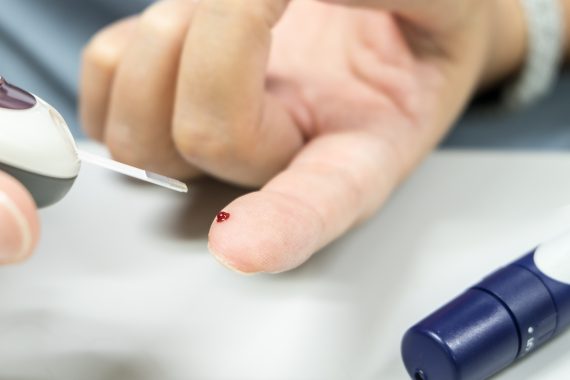How to approach diabetes reviews and tools to support remote collection of data
This information is sourced from NHSE, Diabetes UK, and the Primary Care Diabetes Society (PCDS):
PLEASE NOTE: THIS IS NO LONGER RELEVANT AND IS NOT BEING UPDATED BUT HAS BEEN LEFT ON THE SITE FOR REFERENCE PURPOSES ONLY
Studies on Covid-19 related mortality in Type 1 and Type 2 diabetes reveal that people with type 1 diabetes were 3.5 times more likely to die in hospital with Covid-19 than those without diabetes, and people with type 2 diabetes were just over twice as likely to die
The PCDS recommend that people with diabetes should intensify their glycaemic control as required for the primary prevention of Covid-19 illness
Whether to review remotely or face to face
- NHSE now advise that remote triage should be used wherever possible with patient preference taken into account. Where face to face care is given GPs should co-ordinate care so that as much as possible is done in a single consultation
- If data can be gathered by the person at home, these can be included in a pre-review questionnaire, which can then be reviewed to decide if a remote consultation is appropriate
Who to prioritise for review
The PCDS advise that practices maintain diabetes reviews but that recalls should be prioritised on the basis of clinical need. The following practice-generated searches are suggested:
- Due/overdue reviews/ previous nonattenders
- Poor control (HbA1c ≥75 mmol/mol; BP or lipid targets not met; high CVD risk)
- On insulin or sulphonylurea (hypo risk assessment)
- Comorbidities/vulnerable
- Recent diagnosis – tight control urgent to ensure legacy effect
Tools to help people with diabetes gather data and perform self examinations at home
- Self-completed pre-review questionnaires
- Home blood pressure monitoring (HBPM) patient leaflet
- HBPM diary
- List of clinically validated blood pressure monitors for home use
- Self-monitoring of blood glucose (SMBG) diary
- Video instructions on how to perform a finger-prick blood glucose test
Remote foot assessment
- Ask the person to document symptoms related to the feet and legs, visually check all parts of their feet themselves (using a mirror or with help), including identifying dry or cracked skin, changes in colour, ulcers, rashes or blisters
- If changes or concerns are identified, try to arrange photos to be shared prior to the consultation
- The Diabetes UK ‘Touch the Toes’ test uses the validated Ipswich Touch Test to enable patients to check sensation in their feet
SGLT2 Inhibitors
- SGLT2i tablets can mask the symptoms of diabetic ketoacidosis, which can be caused by coronavirus
- Patients with type 1 diabetes were advised to stop taking SGLT2i during March and April 2020. Updated guidance now advises that their doctor ‘may’ want to stop their SGLT2i. They need to be aware of the significantly increased risk of DKA and reminded about presenting symptoms, ketone measurement, sick day guidance and prompt medical advice
- Patients with Type 2 diabetes should continue to take SGLT2i tablets unless they become unwell in which case they should stop them
Diabetes education
Diabetes education for patients whilst unable to access face to face education is available from Diabetes UK learning zone
Diabetes UK has online advice and a helpline for patients with diabetes on managing their condition and health checks
Written by Dr Poppy Freeman
See also: Long term condition reviews














